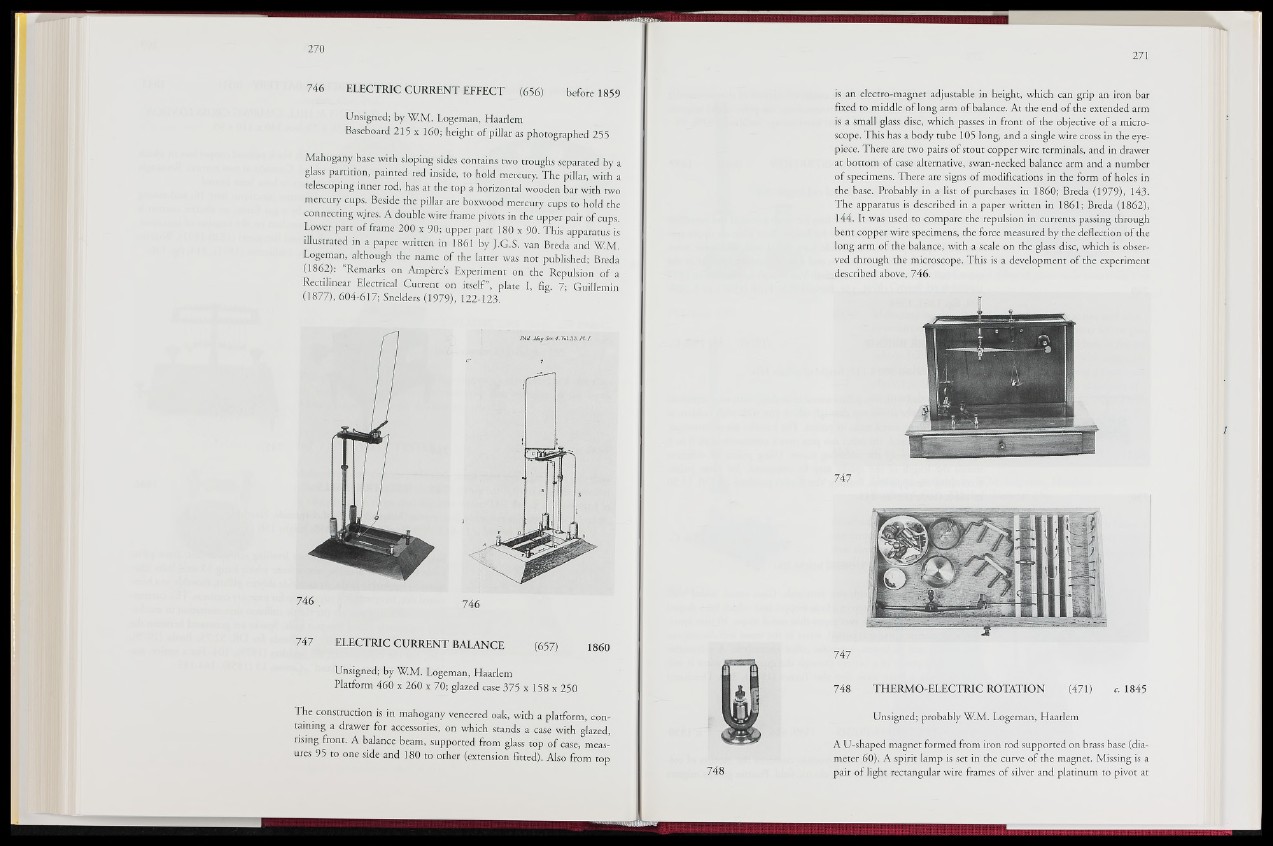
746 ELECTRIC CURRENT EFFECT (656) before 1859
Unsigned; by WM. Logeman, Haarlem
Baseboard 215 x 160; height of pillar as photographed 255
Mahogany base with sloping sides contains two troughs separated by a
glass partition, painted red inside, to hold mercury. The pillar, with a
telescoping inner rod, has at the top a horizontal wooden bar with two
mercury cups. Beside the pillar are boxwood mercury cups to hold the
connecting wjres. A double wire frame pivots in the upper pair of cups.
Lower part of frame 200 x 90; upper part 180 x 90. This apparatus is
illustrated in a paper written in 1861 by J.G.S. van Breda and W!M.
Logeman, although the name of the latter was not published; Breda
(1862); “Remarks on Ampere’s Experiment on the Repulsion of a
Rectilinear Electrical Current on itself”, plate I, fig. 7; Guillemin
(1877), 604-617; Snelders (1979), 122-123.
747 ELECTRIC CURRENT BALANCE i860
Unsigned; by M1M. Logeman, Haarlem
Platform 460 x 260 x'70; glazed case 375 x 158 x 250
The construction is in mahogany veneered oak, with a platform, containing
a drawer for accessories, on which stands a case with
rising front. A balance beam, supported from glass top p f case, measures
95 to one side and 180 to other (extension fitted). Also from top
is an electro-magnet adjustable in height, which can grip an iron bar
fixed to middle of long arm of balance. At the end of the extended arm
is a small glass disc, which passes in front of the objective of a microscope.
This has a body tube 105 long, and a single wire cross in the eyepiece.
There are two pairs of stout copper wire .terminals, and in drawer
at bottom of case alternative, swan-necked balance arm and a number
of specimens .where are signs of modifications in the form of holes in
the base. Probably in a list of purchases in 1860; Breda (1979), 143.
The apparatus is described in a paper written in 1861; Breda (1862),
144. It was used to compare the repulsion in currents passing through
bent copper wire specimens, the force measured by the deflection bf the
long arm of the balance, with a scale on the glass disc, which is observed
through the microscope, This is a development of the experiment
described above, 746.
1
74 7
m m
748 THERMO-ELECTRIC ROTATION (471) c. 1845
Unsigned; probably W.M. Logeman, Haarlem
ATI-shaped magnet formed from iron rod supported on brass base (diameter60).
A spirit lamp is set in the curve of the magnet. Missing is a
pair of light rectangular wire frames of silver and platinum to pivot at